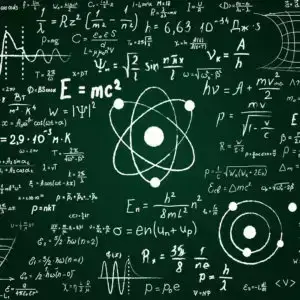

This sentence is shit, but I want to point out at least that “magic” is jargon for “well-behaved” or “particularly well-suited (for our application)”. It’s essentially “magic” like in the phrase “it works like magic”.


This sentence is shit, but I want to point out at least that “magic” is jargon for “well-behaved” or “particularly well-suited (for our application)”. It’s essentially “magic” like in the phrase “it works like magic”.


Linguistically, the difference between “he died” and “he’s dead” is called aspect. As for your specific sentences:
“I thought he died” -> There was some event that ocurred which I witnessed or which I was made aware of in someway which I thought had resulted in him dieing.
“I thought he was dead” -> My understanding was that for some time up to now he was a corpse (or in some other such state). I do not necessarily know about the time or event in which he died.


Everything I wrote “is Markdown”, because the program you’re using to view my text assumes that my text is formatted in Markdown. You too are writing in Markdown, which for example is how your comment got displayed in bold. You did not “type boldly” to do that, you typed some text like **this is bold** and that got displayed in bold.
Maybe more examples would help. Here’s something I can do because the program you’re using to view my text assumes it’s Markdown: this is a monospace font and this is not. This desire for my text to be displayed in a monospace font is expressed in Markdown using grave quotes. It’s common to use this to denote literal, unprocessed text, so I would say that what I typed was `this is a monospace font`. If you copy and paste that text into a comment, do nothing else to it, and post it, you will see it displayed as this is a monospace font without the quotes because a Markdown compatible program sees it and knows “this person wants the text between these grave quotes displayed monospace”.
You can also see where I just wrote “without” italicized; in Markdown this is expressed as *without* or _without_.
If I type
* Thing 1
* Thing 2
* Thing 3
You’ll see this displayed with bullets, not asterisks, and proper indenting and vertical spacing for a list:
Thing 1
Thing 2
Thing 3
It also gets displayed in exactly the same way if I write it in these two different ways as well:
* Thing 1
* Thing 2
* Thing 3
* Thing 1
* Thing 2
* Thing 3
Thing 1
Thing 2
Thing 3
Maybe it would be helpful to just skim through a Markdown spec. (There are different flavors of Markdown; this one is called CommonMark, which is usually what people actually mean when they say Markdown. More information on their website.)


You typed some text to make your first comment, and it looked something like this:
Elder Millennial here. All I know about markdown is:
1. To make a hard copy of a thought or conversation. "Mark that down in your notes, so we don't forget."
2. A discount or sale. "Did you see the 30% markdown on three legged jeans?"
The way your comment actually displays is different though, isn’t it? The numbered items are indented and come one after the other without any space inbetween, and the text within each numbered item is properly aligned.
What you entered is just text, and text by itself is inherently meaningless. “Markdown” is the name of a particular standard way of formatting text so that programs can reliably interpret parts of that text as representing the writers desire for their text to be displayed a particular way. You can kind of think of it like a programming language. As another basic example, consider this text:
This is a paragraph.
This is still the same
paragraph.
Here is the second one.
And here is the third one.
I’m going to paste this text right after this sentence; notice how the amount of space doesn’t matter, and how a new paragraph is denoted by at least two line breaks.
This is a paragraph. This is still the same paragraph.
Here is the second one.
And here is the third one.


You made me realize this is actually pretty common in math, e.g. “Let x, y be real numbers” instead of “Let x and y be real numbers”. I imagine this comes from the infuence of notation like “Let x, y ∈ ℝ”.


Well, Con(PA) is a “natural” statement I’d say, and ZFC proves Con(PA).


All the successful theories were developed from experimental results
The more I think about this, the more I’m not sure I 100% agree… For example, special relativity essentially came from the observation that Maxwell’s equations were not Galilean invariant, and instead invariant under this weird other group (what we now call the Lorentz group); and QED essentially came from Dirac wanting to take a “square root” of the Klein-Gordan equation.
(Of course, real history is more intricate than this.)


This is not about the same article nor the same authors.


No one, and I mean absolutely no one, “truly” “thinks in words”, even people who have a constant running narrative in their head. The reason is simple: How can you choose words/form sentences without any prior thought/idea that those words describe? How can you “struggle to find the right words” if your thoughts are originally in words (an experience I assume everyone has had)?


I think probably people get wrapped up in the art and music, and rightfully so. But (having more that 100% completion, mind you) there were aspects of the level design and bosses that really did not sit well with me. I couldn’t help but feel like “it’s just Metroid but worse” in a lot of aspects.


Assuming that 99% of them are hoaxes, clout chasers, or misidentified phenomena, that still leaves 1% of all those videos to be true.
Yes, if you assume something is true then you can conclude that it is true.


I’m pretty sure OP is referring to the screenshotted text, not the first comment in the thread.


Ahhh, ok. Thank you, my fault for not reading carefully.


Where are you seeing “blockchain”? Looking through the (scant) documentation on GitHub, they explicitly do not use blockchain: https://github.com/plebbit/docs/blob/master/docs/learn/intro.md “Running a full node takes a few seconds, since there is no blockchain to sync.”
Another link someone gave: “We propose solving the data problem by not using a blockchain…” https://github.com/plebbit/whitepaper/discussions/2


I was responding to “Look at an image for a second. Can you only remember 10 things about it?” I didn’t think that was a fair characterization. I see you probably specifically meant 10 yes/no questions about an image, but I don’t think yes/no questions are a fair proxy for “things”.
In any case you can read the preprint here https://arxiv.org/abs/2408.10234v2 and they make it immediately clear that 10 bits/s is an order-of-magnitude estimate, and also specifically list (for example) object recognition at 30-50 bits/s.


10 bits means 2^(10) = 1024 different things can be encoded.


Where are you getting this information? This “pull your cheeks together a bit” sounds completely out of left field to me.


This is a strange take. In Japanese it’s literally a consonant cluster [ts], which is to say it’s literally a Japanese “t” followed by a Japanese “s”. The Japanese “t” and “s” are not exactly the same as English, but they’re close enough, and English has the same cluster in, say, the plural “mats” of “mat”.
What “tsunami” breaks in English is not really the sound, but instead just the fact that English doesn’t allow [ts] unless it’s preceeded by a vowel.


equivalent to a shonen manga’s plotline.
It’s funny you should say that as there is actually a loose anime adaptation, titled “Gankutsuou”.
i,j,k for basis vectors is an interesting one. Historically, Hamilton invented his quaternions before any notion of “vector” existed (as an algebraic object; I believe the geometric notion is older). (So, what, did people just write out everything componentwise? Yes, yes they did. For example, that’s how things like Maxwell’s equations were originally presented.) The reason he chose i,j,k for the unit quaternions is because i was already in use for complex numbers, and i was in use for complex numbers probably to stand for “imaginary”.
The notion of “vector” was invented specifically as a “de-algebraicization” of quaternions. People did not like working with quaternions because they thought it was weird, particurlary because they required 4 numbers but space only required 3, so the likes of Gibbs and Heaviside gutted them and gave us modern 3D vector calculus. The reason we work with the dot product and cross product in 3D is specifically because, given pure imaginary quaternions v, w the product (vw) has real part (-v.w) and imaginary part (v x w).
Also, your last paragraph is somewhat misinformed. Sequences of Greek letters are used all the time, and Hebrew letters are also used in set theory to denote cardinalities (though I can only think of aleph and beth, no sequences of such letters). It is also well-known that some people like to use Japanese よ (yo) for the Yoneda embedding in category theory. But beyond Latin and Greek, there is quite a dearth.